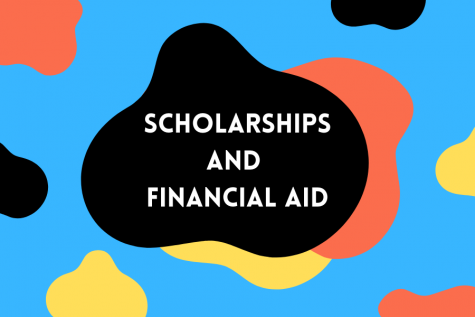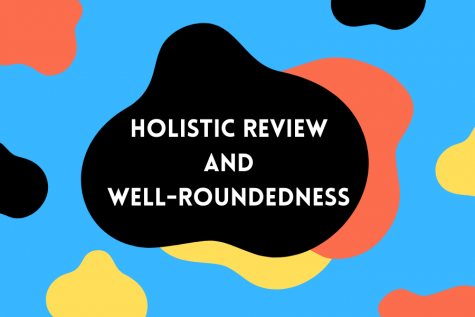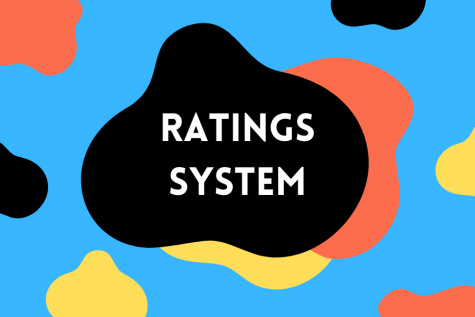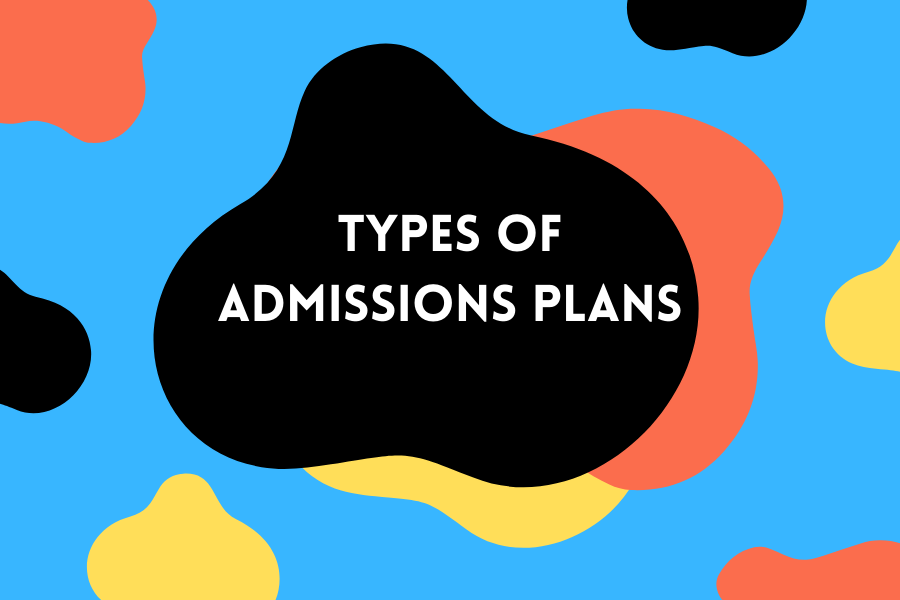This guide contains tens of thousands of words about how to apply to college, but I’ve yet to directly address where to apply — or where to commit after receiving your decisions.
This is a section that’s particularly difficult to write because so much of this process boils down to your personal preferences. The most important general advice I can give you is to find schools that are a good academic and cultural fit for you. Regarding the latter, I want to emphasize that your college experience is about more than academics. This decision isn’t as simple as saying, “I want to study biology. Who has the best biology program?” Yes, you’re applying to these institutions to be a student, but you’re also choosing where you’re going to live and interact with peers, professors, etc. for the next four years. Your college years won’t be nearly as enjoyable — or “successful,” however you define that — if you’re miserable the entire time. If a school is a good fit, the social environment should enhance your academic experience and vice versa.
With that in mind, here is a brief outline for this piece:
- Factors to consider (the basics, academic fit, cultural fit)
- Helpful resources for researching schools
- Assembling a list of schools to apply to (reaches, targets, safeties)
Factors to consider
The basics (and some miscellaneous items)
- Cost: Run those net price calculators and look through those scholarship lists (see my college affordability post for more information) to get an idea of how much you might be paying at a certain school. Some colleges are also known to have more generous financial aid packages than others. Case in point: the Ivy League is sometimes cheaper than a big name public university for out-of-state applicants. If you think grad school could be on the horizon, especially a pricey endeavor like law or medical school, that’s another factor to take into account.
- Proximity to home and ease of travel: Is your goal to stay close to home — or, conversely, to get as far away as possible? How do you feel about the prospect of going from August to Thanksgiving without seeing your family? How important is it that you’re within a day’s drive of home?
- Administration: Does administration at School X act benevolently towards students? For example, how has that school responded to the pandemic, natural disasters, etc.?
- Housing: Does School X have a reputation for high or low quality housing? Are students required to live on campus for a specific duration of time? How are the off-campus housing options in the surrounding area?
- Student services: Would School X meet your non-academic needs as well? For example, think about healthcare.
- Food: This might be especially important to consider if you have certain dietary restrictions.
- Weather: This might sound trivial, but conditions like seasonal affective disorder are real. You’re deciding where to live for the better part of four years, which includes the accompanying weather.
Academic fit
- Academic calendar: Does a school use semesters, quarters *ahem*, Dartmouth’s jank schedule, etc.?
- Department quality: How strong are the departments that you would be studying in? Some schools are known to “specialize” in certain academic areas. Does this school attract the best professors in a given field? Do the available courses provide solid breadth and/or depth of study?
- General education and major requirements: Some schools have few or no general education requirements; others force you to spend the bulk of your first two years knocking out gen ed classes. For the subject(s) you could see yourself studying, what does the path to a degree from School X look like?
- Class sizes: Do you prefer large, lecture-based classes or smaller classes with more discussions? How much do you value getting to know your professors closely?
- Major policies: How easy/hard is it to switch majors, double major, etc.?
- Teaching and advising: Are the professors and advisors at School X considered to be helpful and supportive of students?
- Internship opportunities: Does School X help students land internships? Is School X in an ideal location for internships in Field Y?
- Study abroad programs: Does your school offer robust study abroad programs that align with your interests?
- Undergraduate focus: How much of the attention, resources, etc. go to undergrad students? Similarly, do the professors at School X work there because they love teaching or because they want a big research budget?
- Academic rigor: It might seem obvious, but classes at elite schools are incredibly challenging. Are you OK with the amount of studying (and risk of lower grades) that this may entail?
- Grade inflation/deflation: Some schools are known to “inflate” or “deflate” GPAs through measures such as generous/brutal grading curves. What ramifications might this have for grad school admissions, job applications, etc. One additional note: grade inflation/deflation might exist within individual departments as well.
Cultural fit
- Population: Socially, do you want a bustling campus where you’ll meet lots of people or a smaller, more close-knit community?
- Student vibe/atmosphere: Some colleges are known to have very collaborative student bodies. Others are known to be much more cutthroat. Stress culture, sometimes referred to as floating duck syndrome, can result in a toxic environment to learn in. What are students at this school like? What do they value? Do you see yourself fitting in among your peers? Like I said earlier, don’t underestimate the importance of choosing a school where you’ll be happy.
- Social/party scene: We’re talking about your late teen years and early 20s: you should have some fun too. Does the social landscape at this school align well with your personability and how you enjoy spending time outside of class?
- Location: Is School X in a college town, part of a big city, etc.? How connected/insulated is School X from the surrounding area? Is this a place where you would want to live for four years?
- Inclusiveness: How diverse are the student body and faculty? Beyond the raw numbers, do members of historically marginalized groups (BIPOC, LGBTQ+, etc.) feel welcome and supported at School X?
- Extracurricular activities, clubs, etc.: How involved are students outside of the classroom? Could you envision yourself participating in the extracurriculars at School X? Are students genuinely passionate about what they do or are they merely trying to pad their résumé?
- Sports and school spirit: This is a prime example of a factor that might mean a lot to some applicants and nothing to others. I’ve seen campuses that are pulsing with energy on gameday and others that are…not. The pride that people have in their school can be both a blessing and a curse depending on how you look at it. Either way, you can definitely notice a difference in the intangible “feel” of a college.
Helpful resources for researching schools
- Common Data Set metrics; can be found by searching “[School X] Common Data Set”
- Racial/ethnic diversity (Section B2)
- Percentage of freshman and total undergraduate student body that live on/off campus, join fraternities/sororities, etc. (Section F1)
- Student-to-faculty ratio (Section I2) and percentage of classes with 2-9 students, 10-19 students, etc. (Section I3)
- Percentage of bachelor’s degrees that are for [insert major] (Section J1)
- Niche
- Student polls about professors, campus life, etc.
- Niche also has decent quantitative and qualitative data about the students at a specific school.
- Social media
- Most colleges have a subreddit, which is a good place to ask questions to current students, dig up past Q-and-As or simply see what students are talking about.
- Even searching a school on Instagram or Twitter and looking through students’ posts can help you get a feel for the vibe on campus.
- School-specific websites
- Of course, you have to take everything here with a grain of salt since schools are going to present themselves in the most positive light possible.
- What I do find valuable from these pages is information about the academic nuts and bolts. What are the credit requirements? What classes were offered last year?
Assembling a list of schools to apply to
The first thing to do when creating a school list is to be honest about your admissions chances. A lot of kids (especially those eyeing top-ranked colleges) underestimate just how competitive this game has become and get burned when decisions are released.
You might have heard about three categorizations of schools: safeties, matches and reaches. Here is how I would define each term based off advice that I’ve seen from college admissions consultants:
Safety: You are guaranteed to be admitted based on your stats (i.e. grades and test scores). Some people expand this definition to include schools where your stats are above the 80th percentile. (You can typically estimate these numbers using the aforementioned Common Data Set and/or posts on the school’s admissions website.) That said, as one consultant put it, “those percentiles should be tweaked for how good of a fit you are for the school, your own risk tolerance and how strong of an applicant you are outside your stats.”
Match: These are also sometimes referred to as target schools, places where your stats are in the 40th percentile or above. (See below, however, for a major exception.) In other words, you definitely have a shot at getting in, but you shouldn’t place these colleges in the safety bucket, either.
Reach: Reaches are schools where your stats are below the 40th percentile. Additionally, pretty much every applicant, regardless of their stats, should consider schools with a 25-30% acceptance rate or lower to be a reach. To illustrate why, let’s use USC’s admissions data for Class of 2024 enrollees. The median unweighted GPA and ACT composite score were 3.87 and 32, respectively. It might be tempting, then, to label USC as a match for a kid with, say, a 3.9 GPA and 33 ACT score, but the acceptance rate was just 16.1%. For context, 25% of all applicants that year had at least a 3.95 GPA; likewise, 25% scored at least a 34 on the ACT or 1500 on the SAT. Why does that matter? It means USC rejected a ton of high-stats students because so many applied relative to the number of available spots. Quite frankly, no one should feel super confident about their odds at USC…unless…nope, I’m not making that joke.
Please, please, please find safety schools that you would genuinely enjoy attending. Most people will (understandably) fixate on reaches. Think about what characteristics of those schools appeal to you, then research less-selective schools with similar traits. Or if you’re not entirely sure what you want, apply to a variety of schools (big state school, small liberal arts college, etc.) to give yourself options. Every year, there are people who haphazardly throw a few safeties and matches onto their list because someone told them to. When their reaches don’t pan out, they end up stuck somewhere they don’t really want to be. Avoid that fate by doing your homework in advance.
Another frequent question is how many schools to apply to. This is where the concept of shotgunning, or applying to many reach schools, comes into play. A few warnings: shotgunning can be draining, expensive (assuming you don’t have fee waivers) and inadvertently decrease your chances of getting into an elite school if you place too much emphasis on quantity of applications over quality. I think a big reason shotgunning spirals out of control for some people is because they’re just prestige hunting, applying to top schools even if they aren’t a good fit. If you actually are a competitive applicant at highly-selective colleges, applying to a greater number (assuming your applications aren’t overly-rushed) does increase your chances of getting into at least one. It seems like obvious advice as I sit here writing it out, but an easy way to make shotgunning more manageable is to cut reaches from your list that you don’t actually like that much.
One other note on this front: applying to more schools allows you to diversify your financial aid options. The schools that are hardest to get into (i.e. reaches) often give the best financial aid packages. Similarly, applying to more safeties might give you a better shot at competitive, merit-based scholarships in case you don’t win a specific scholarship at School X.
As far as the ratio of safeties to matches to reaches, consider this perspective: “Many school counselors tell students to apply to a 1-3-1 ratio. I recommend that students apply along the lines of a 1-2-3 ratio, increasing the proportion of reach schools for those applying to 10+ colleges. This may seem like a risky bet. However, consider the following scenarios for students each applying to 12 schools:
- Student A applies to 2 safeties, 8 fits, and 2 reaches. They are accepted into both safeties, 5 fits, and no reaches. They choose one of the 5 fits and are relatively satisfied.
- Student B applies to 2 safeties, 4 fits, and 6 reaches. They are accepted into both safeties, 2 fits, and 1 reach school. They are thrilled to attend the reach school.”
I don’t have a specific ratio for you, but the underlying logic here checks out. I will add that if you have safeties and matches that truly excite you, it gives you more breathing room to shoot for the stars with reaches.
Finally, I want to discuss the idea of the dream school. It’s easy to get attached to one place and have your heart set on going there, but remember that a 10% acceptance rate means 90% aren’t getting in. One of the key reasons I was able to keep my composure throughout the college admissions process was that I didn’t allow myself to emotionally latch onto a school until after I was admitted with sufficient financial aid. Because I was realistic about the odds and loved many of the schools on my list, I knew that no single decision would crush me.

![Smiling with Parkway North seniors Sarah Ham and Alison Lam (second and third from right), eight West state qualifiers hold up the iconic DECA symbol. The program has connected over 7,000 high schoolers, giving students the opportunity to network and expand their social circle. “Getting along with people that might be different from you is the most important part of DECA. You learn things about people that you originally wouldnt talk to, and its nice to know how to work with other people [as well as] make new friends in a different area,” junior Laya Krishnakumar said. Courtesy of Laya Krishnakumar](https://pwestpathfinder.com/wp-content/uploads/2024/04/IMG_7918-1200x675.jpg)
![Latin students pose for a group photo in front of historical ruins in Italy. From March 13 to March 23, the Latin department traversed cities in Italy to immerse students in an educational experience of a lifetime. “I enjoyed being able to learn about the different cultures. [The trip] encouraged me to see other peoples lifestyle and learn more about different histories,” senior Suraiya Saroar said.](https://pwestpathfinder.com/wp-content/uploads/2024/04/PXL_20240318_092633493.jpg)


![Members of concert band work to play the soaring melodies of Crowns of Glory by Jack Wilds during their winter concert. Because of the pieces difficulty, the band had to work together extra diligently to make it sound concert-ready. [Band has] helped me [with] teamwork because its not just an individual thing. The whole group has to be put together to make something amazing, Concert Band member and sophomore Ella Bruner said.](https://pwestpathfinder.com/wp-content/uploads/2024/03/unnamed-3-1-1200x800.jpg)
![From Jan. 22 through Feb. 1, Parkway West High is displaying a wide array of art pieces made by students ranging from elementary to high school. All classes were represented on the displays in both the art wing and the main foyer of the school. “[Art] benefits me because in the middle of a busy day. I can just relax and have some fun doing art and it makes me happy. I think its important that you show art in the art show so that people can get inspired by it and be inspired to create their own pieces; it’s really impactful,” sophomore Dhiya Prasanna said.](https://pwestpathfinder.com/wp-content/uploads/2024/02/image1-1200x800.jpg)

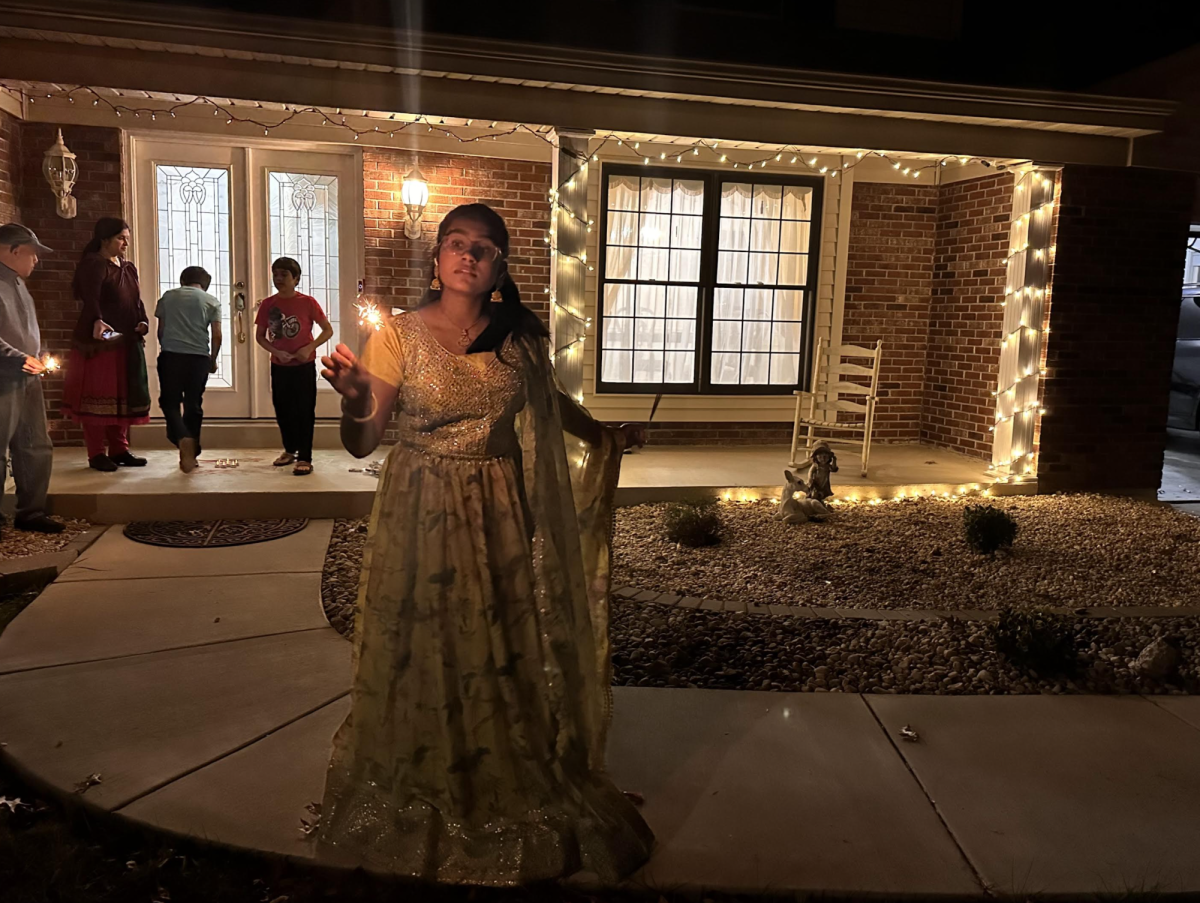

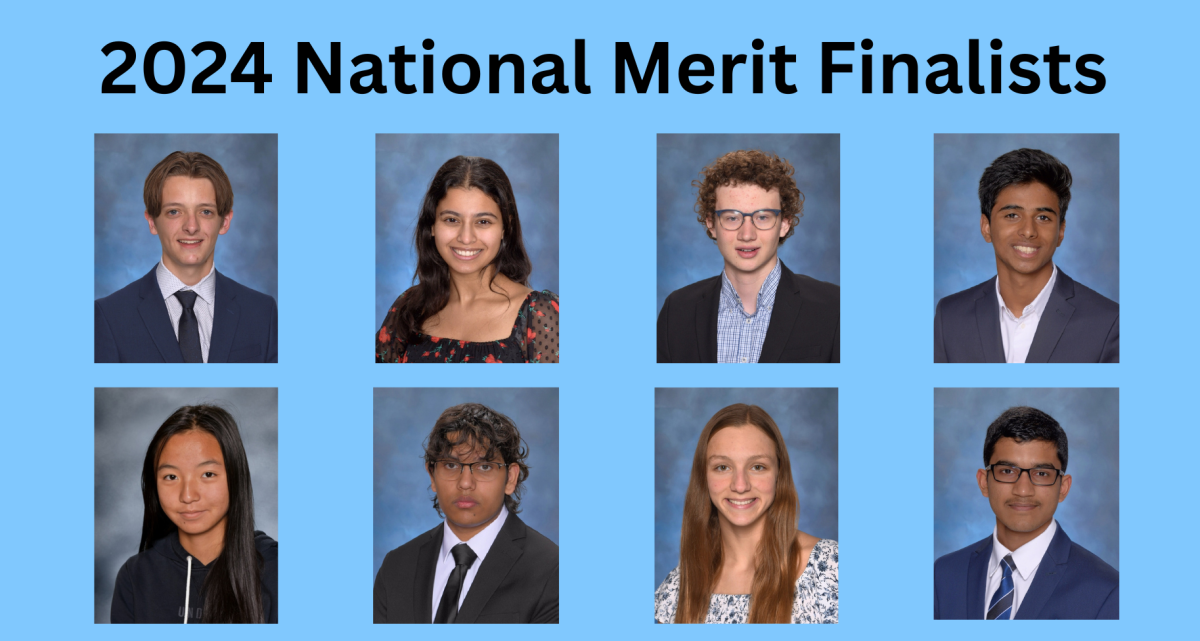
![Moviegoers smile for a picture after watching the Bollywood movie “3 Idiots.” The event ran from 4-8 p.m. on Saturday, March 9 and was open to students across the Parkway School District. “I decided to come to the movie night because I wanted to introduce my non-Indian friends to the rich culture and entertainment of Bollywood. One of my favorite parts [of the night] was the combination of [the] amazing food and the pure comedic entertainment. [It] was unmatched,” sophomore Aryan Allu said.](https://pwestpathfinder.com/wp-content/uploads/2024/03/IMG_5479-e1710180016483-1200x900.jpg)
![Senior Kylie Secrest volunteers at the blood drive signup table.The table provided students aged 16 and up with information about the drive and assisted them in the signup process. “We decorated the stand in the lunchroom with heart related or red decorations from either Dollar Tree or Five Below,” Secrest said. “This year was my first year doing [the blood drive] and it was fun. I got to be able to meet new people and help out the community.”](https://pwestpathfinder.com/wp-content/uploads/2024/03/image2-1200x800.jpg)
![Performing a dance, athletes wave their pompoms in the air as special education teacher Wendy Zieleskiewicz stands behind them. Zielesckiewicz, who has been teaching for 25 years, didn’t know what she wanted to pursue until she remembered her love for children. She now sees her students benefiting from Special Olympics. “Its really fun to see [athletes] grow. [Special Olympics is] incredible — Its high energy, its a lot of fun. Its cool to see the kids all working together and having a good time. They make connections with other students, [and] its amazing to see how much fun they have. I hope that they can make and maintain relationships with people that are not in this classroom. I always encourage [my students] to participate [in Special Olympics] because it is a lot of fun and even if they dont make a best friend, you still have an opportunity to grow,” Zieleskiewicz said.](https://pwestpathfinder.com/wp-content/uploads/2024/02/unnamed-5-1200x798.jpg)
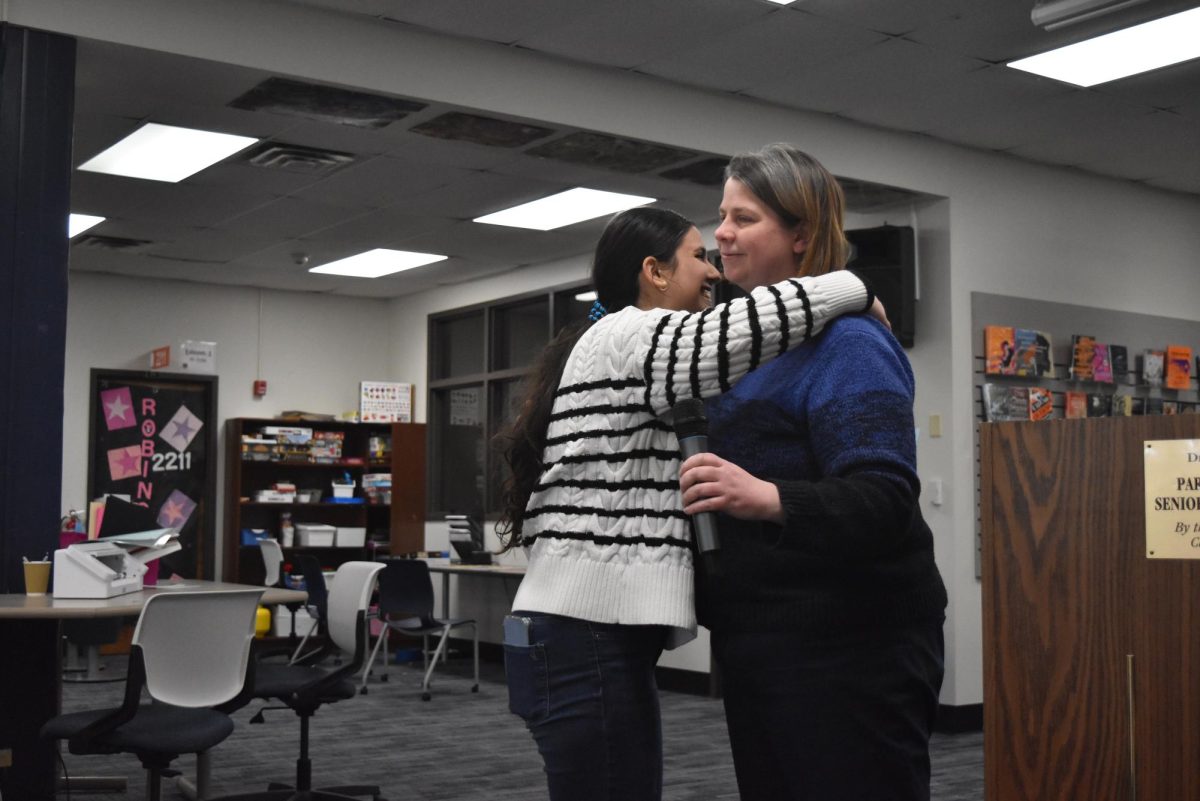
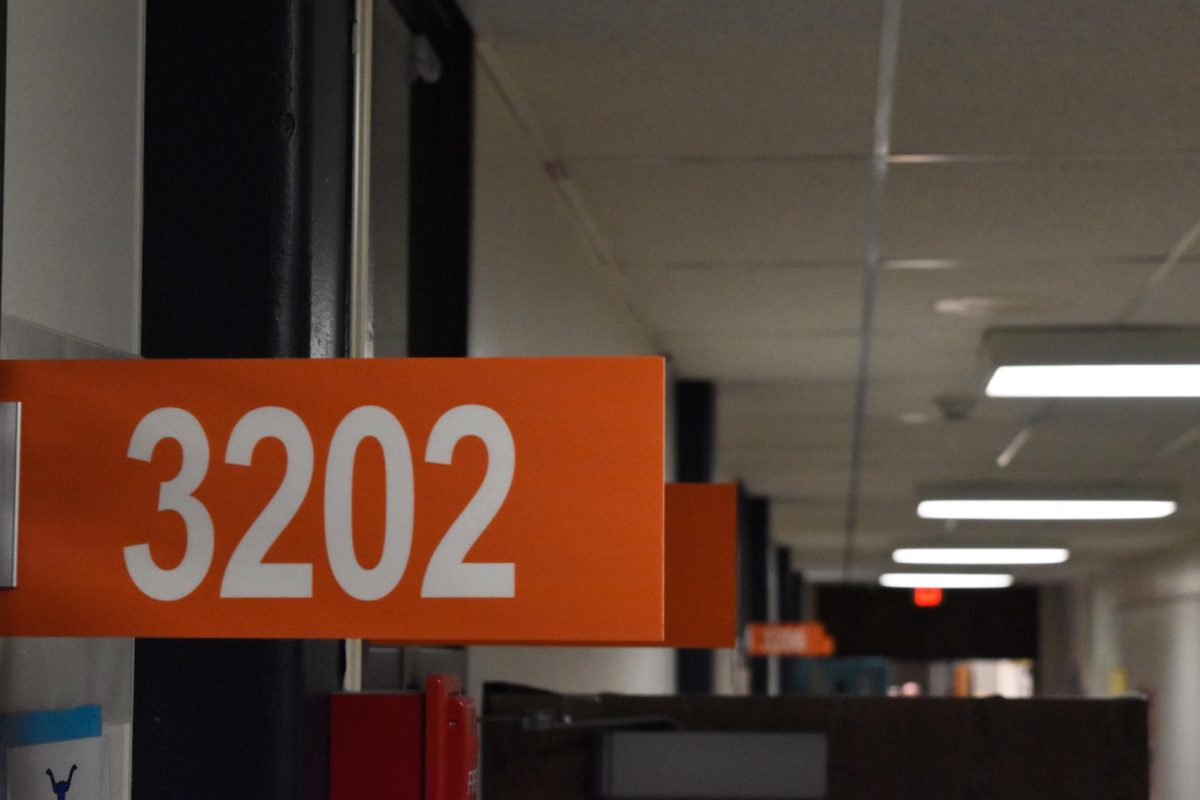
![Smiling widely, Principal John McCabe congratulates English teacher and English Department head Shannan Cremeens on winning the 2023-2024 Teacher of the Year title. Sophomore Cooper Oswald was a witness to the celebration. “We were all pretty excited. We were all clapping and standing up. We even [got to] take a picture with her,” Oswald said.](https://pwestpathfinder.com/wp-content/uploads/2023/12/TOYvertical-1200x954.png)
![English teacher Leslie Lindsey smiles for a photo behind her desk. Growing up, Lindsey participated in many things outdoors, learning life skills that she still uses today. “I loved fishing and was never grossed out by it. I could get my hands dirty and spend time outside; even when it was cold, I didnt care. Fishing takes a lot of patience, and that is [now] a virtue of mine because I have great patience that translates into my classroom,” Lindsey said.](https://pwestpathfinder.com/wp-content/uploads/2024/04/IMG_6632-1-e1712758336310-1200x983.jpeg)
![Each year, as temperatures start to rise, students await the coveted spring break, a week-long vacation taking place from March 16-24. Students and staff appreciated the respite from school and the sunny weather that came along with it. “I enjoyed traveling as a way to spend spring break [and] have a last trip with my family before college. I wish spring break was a little longer so I could have spent more time and not have a quick turnaround coming back to school,” senior Norah Rutkowski said.](https://pwestpathfinder.com/wp-content/uploads/2024/04/Spring-break-Shenanigans-1-1200x800.png)
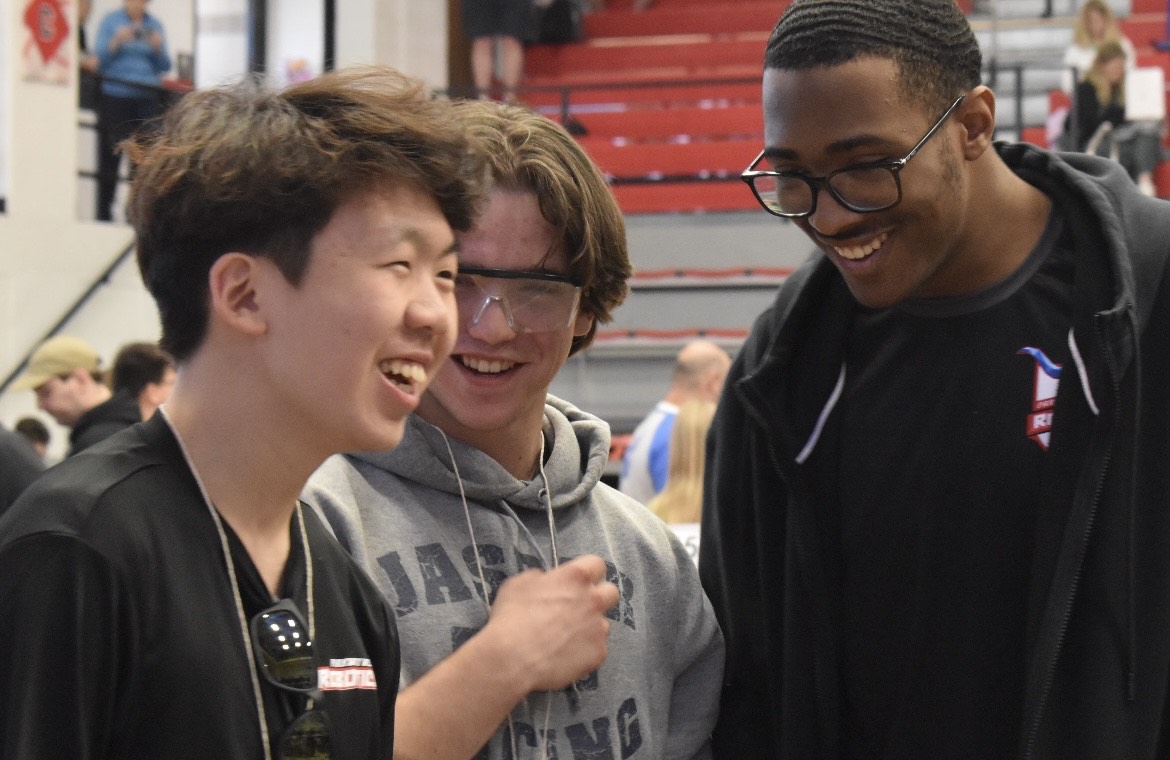
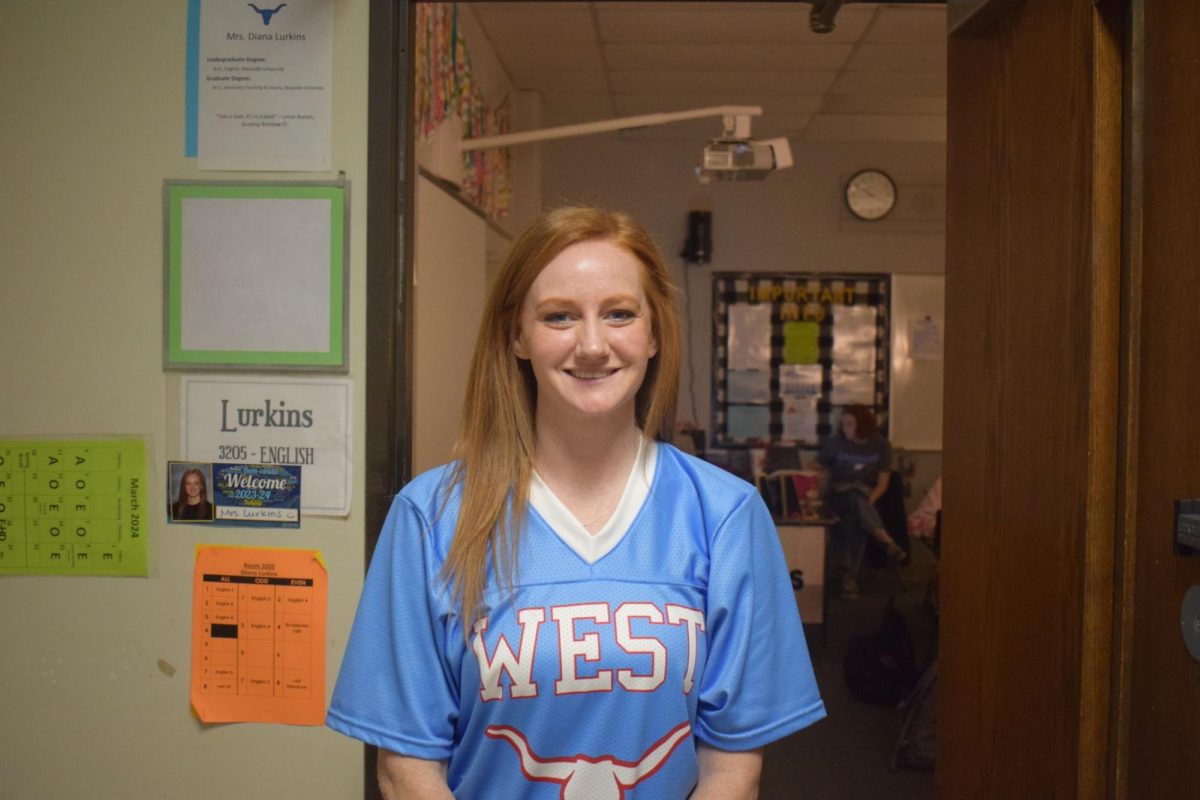

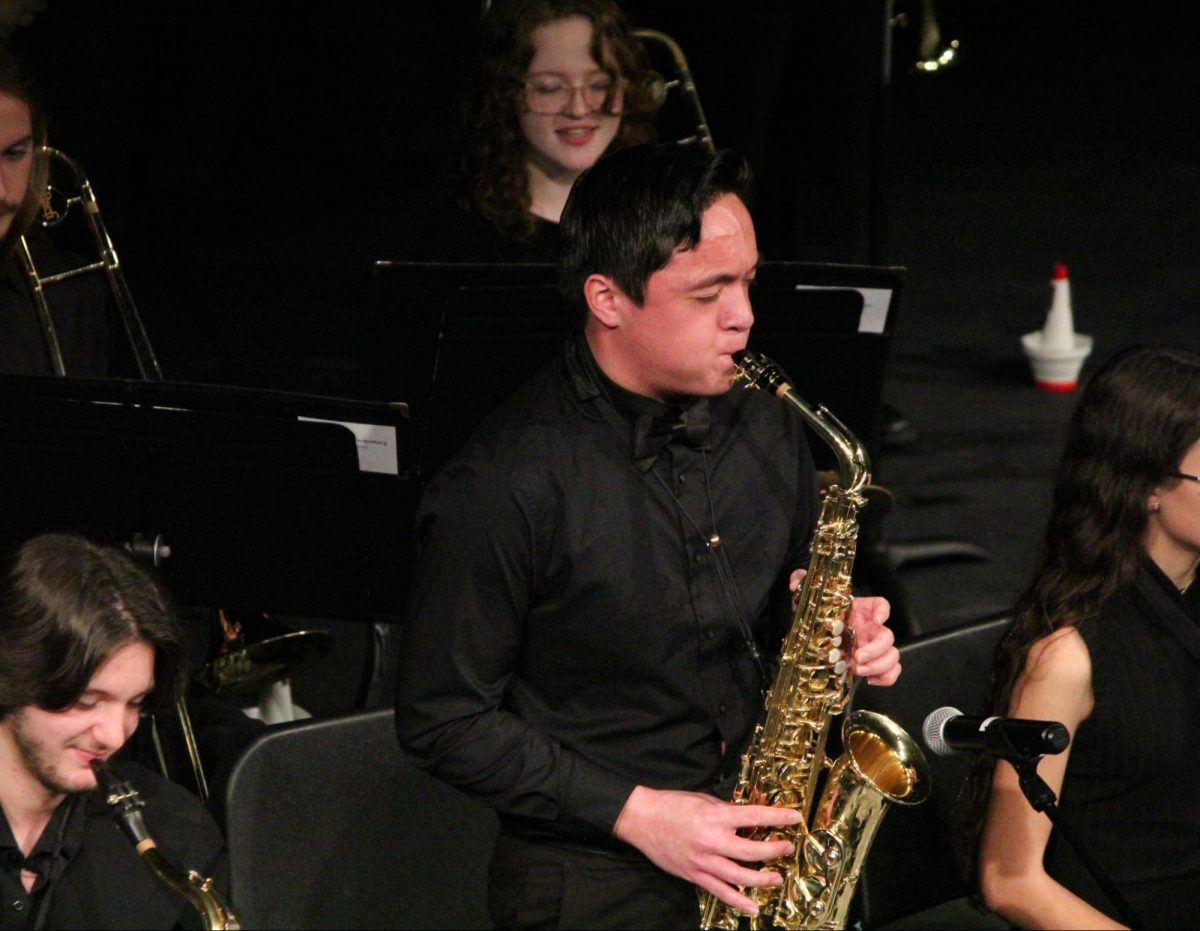
![Senior Dana Zafarani poses in paint reading “Women, Life, Freedom” and “#BarayeAzadi” as a protest against the Iranian government. The experiences of Iranian women inspired Zafarani to assist in any effort to protect women’s rights. “The world should live in peace. Every woman deserves to be equal. Every woman deserves love [and] kindness,” Zafarani said.](https://pwestpathfinder.com/wp-content/uploads/2023/11/Screenshot-2023-10-31-12.54.47-PM.png)
![Business and personal finance teacher Evan Stern stands in front of his classroom. After facing hardships growing up, Stern learned how to deal with them with the help of role models like his dad. “We dealt with some trauma when I was in middle school, and my dad had to be responsible for all three of us while he was working full-time. I know he had to sacrifice a lot. Im sure it was really hard for him, but looking back on it, he did a really good job . I didnt appreciate everything that he did at the time because I was so young. Now, Im engaged and probably going to have kids of my own in the next couple of years so I [am starting] to look at things differently,” Stern said.](https://pwestpathfinder.com/wp-content/uploads/2024/02/Untitled-7-1200x900.jpg)
![Holding his two smiling daughters in his arms, Principal John McCabe celebrates earning his doctorate degree. He attended Maryville University for two years and reached his goal of achieving a Doctor of Education: Educational Leadership degree after months upon months of hard work and long nights. “Im not going to lie, Im glad I have another night of my life back when Im not at school till very late,” McCabe said. “I can spend more time with my family and with my friends [who] are here at [West]. Im really happy about that.”](https://pwestpathfinder.com/wp-content/uploads/2024/01/mccabefeature.png)
![Art teacher Katy Mangrich sits in her classroom, smiling for a picture. During her time in high school, Mangrich learned several lessons that she now passes on to her son. “The biggest life lesson that I learned is honesty. I wouldnt say I was the best teenager, but I learned very quickly in high school to always be forthcoming and honest with my parents because it always ended up serving me better in the long run. [My parents] might have been upset with me [and the mistake I made], but I wasnt going down the rabbit hole of a lie because that was just going to get me into more trouble,” Mangrich said. “I passed [that lesson] along to my nephew. Honesty is always your best approach; just don’t lie. I say that to my son all the time. Theres no advantage to lying, [and] thats a huge takeaway [from] how my parents raised me.”](https://pwestpathfinder.com/wp-content/uploads/2024/01/Screenshot-2024-01-26-10.10.12-AM.png)
![Social studies teacher Aaron Bashirian smiles in front of his classroom. Bashirian didn’t know he wanted to be a teacher from early on, but he found the choice to be a good one. “I started [teaching] because there was an opportunity for me to experiment with it. Fortunately, [teaching] was a good choice. In 2012, I became a teacher at Parkway at the Alternative Discipline Center, which is where they send suspended kids to keep being educated if they choose. I spent six years there and then I got drafted to West, [where] Ive been for about six years,” Bashirian said.](https://pwestpathfinder.com/wp-content/uploads/2024/01/Untitled-35-1200x800.jpg)
![English teacher Angela Frye stands behind her desk in her classroom. Frye went through a lot of personal struggles to get to where she is today, and with each step in her life, she carries her gratitude for those obstacles. “Everything happens for a reason. I believe in [the concept of] good energy, good karma, [from] being a good person. Those are things I dont take lightly. [Struggles] build character. You really appreciate everything you have when you have to work for everything you have,” Frye said.](https://pwestpathfinder.com/wp-content/uploads/2023/11/Untitled-8-1200x800.jpg)
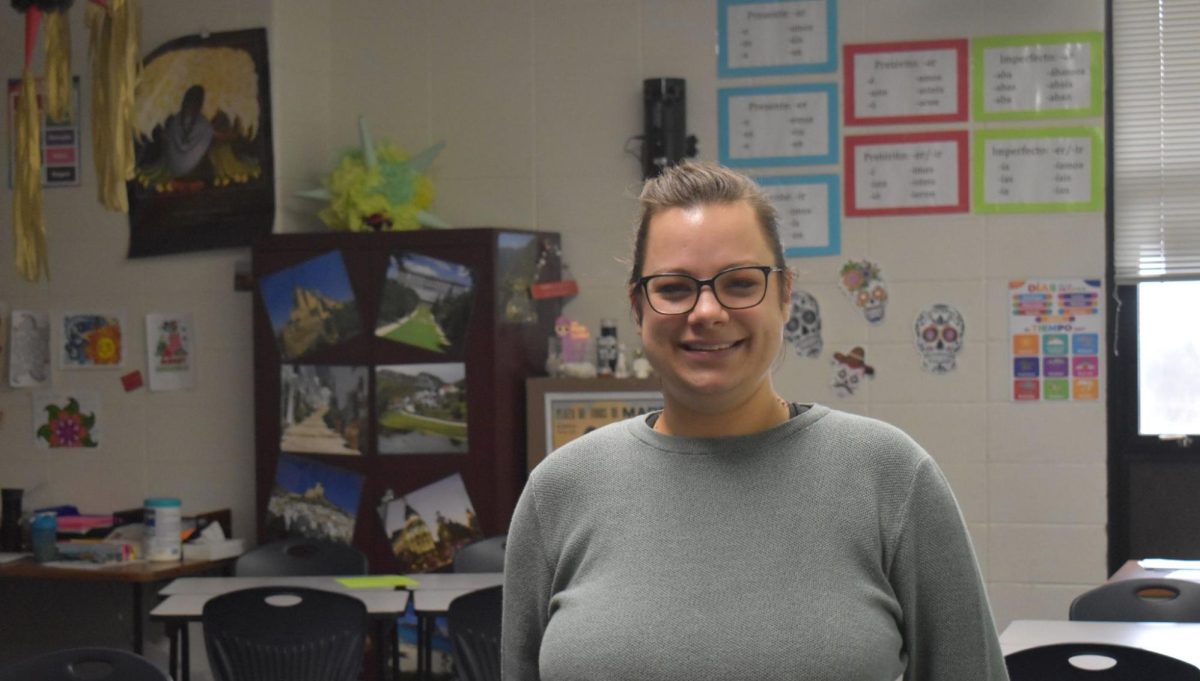
![The celebration of Women’s History Month, originating in 1987, marks an annual acknowledgement of women’s contributions to various fields of work. However, many female revolutionaries remain underrepresented in our history books, oftentimes overshadowed by male counterparts who could reach a greater audience because of their status. “Back then, women didnt have the voice that we do now, [but] their actions gave us the voice we have today to be able to speak up. Now, we share information to show how far we came from,” Black Student Union member and sophomore Jariyah McCalister said.](https://pwestpathfinder.com/wp-content/uploads/2024/04/feature-photo-unsung-4.png)

![Celebrities are inescapable in our day-to-day lives, constantly reminding us of whatever is newest in their lives. And for us on the receiving end, we find ourselves devoting time and effort to vie for just the tiniest sliver of their attention. “[Taylor Swift] is my favorite celebrity, and to me she means someone who is kind, smart and caring,” junior Swati Kumar said. “I feel connected to her and her music; I listen to her everyday and I find [her] very relatable.”](https://pwestpathfinder.com/wp-content/uploads/2024/01/Parasocial-1.jpg)

![January 2024 marks over seven decades since the publishing of “The Bell Jar.” In those seven decades, the novel has opened the eyes of countless women to the unfair treatment they’ve faced, particularly being percieved as nothing more than mothers and the consequences that arise from that. “To my knowledge, [“The Bell Jar” was] one of the earliest novels that explores a womans mental health and inner journey and allows her to go through struggles and make mistakes without vilifying [her]. Shes ambitious yet flawed and unsure how to proceed, like [many] women at the beginning of the 1960s. My mom was born in 1950 and grew up hearing that if she wanted to work, she had three choices: nurse, secretary and teacher. It was a brave new world when she found out there were more options. But that also comes with fear and anxiety and the judgment of others. Sylvia represents that journey,” French teacher Blair Hopkins said.](https://pwestpathfinder.com/wp-content/uploads/2024/01/Mother-26.png)
![In the 1950s, the first recorded spikes in global temperatures were recorded, and ever since, Earth has been in the midst of a disastrous climate crisis, as rising temperatures wreak havoc on susceptible regions and destroy animal habitats worldwide. Junior Nidhi Pejathaya helped found West’s Sustainability Council to create a space where students can educate themselves about climate change and do their part to preserve the environment. “When youre going out of your way to recycle [or] reuse your clothes to save water, youre saving people. Youre saving adults, youre saving families, youre saving children. Youre saving a whole generation. Just because we dont see it doesnt mean its not happening,” Pejathaya said.](https://pwestpathfinder.com/wp-content/uploads/2024/04/new-editorial-feature-1200x800.jpg)



![For the past three years, Parkway has administered high school finals after winter break, a practice that proves to be detrimental to the success as well as the mental health of students. With finals after break appearing to do more harm than good, the question of what changes can be made arises time and time again. “The pressure for finals is difficult, and to have that [pressure for] a few weeks because youre on [a] break can make you generally sad. Its a bummer in general. I wish [finals] were before break, so we [could] have a break to sleep, celebrate and not study. Everyone Ive talked to about it is like yeah, finals sucks, and I wish that wasnt a thing,” junior Meadow Kostial said.](https://pwestpathfinder.com/wp-content/uploads/2024/01/decembereditorial-1200x963.jpg)












![2023 was defined by female vocalists such as Miley Cyrus, Taylor Swift and Paramore’s Hayley Williams as their diversity and talent amongst their respective genres topped the musical charts. Williams took to Instagram to show her gratitude for having owned the No. 1 spot on Billboard’s Top 100 chart. “We know enough by now to know success doesn’t equal value. That being said, to experience the [No. 1] on this album, as this version of Paramore, is such a sweet and surreal moment to celebrate together,” Williams wrote.](https://pwestpathfinder.com/wp-content/uploads/2023/12/2023-A-Musical-Recap-2.0-1.png)




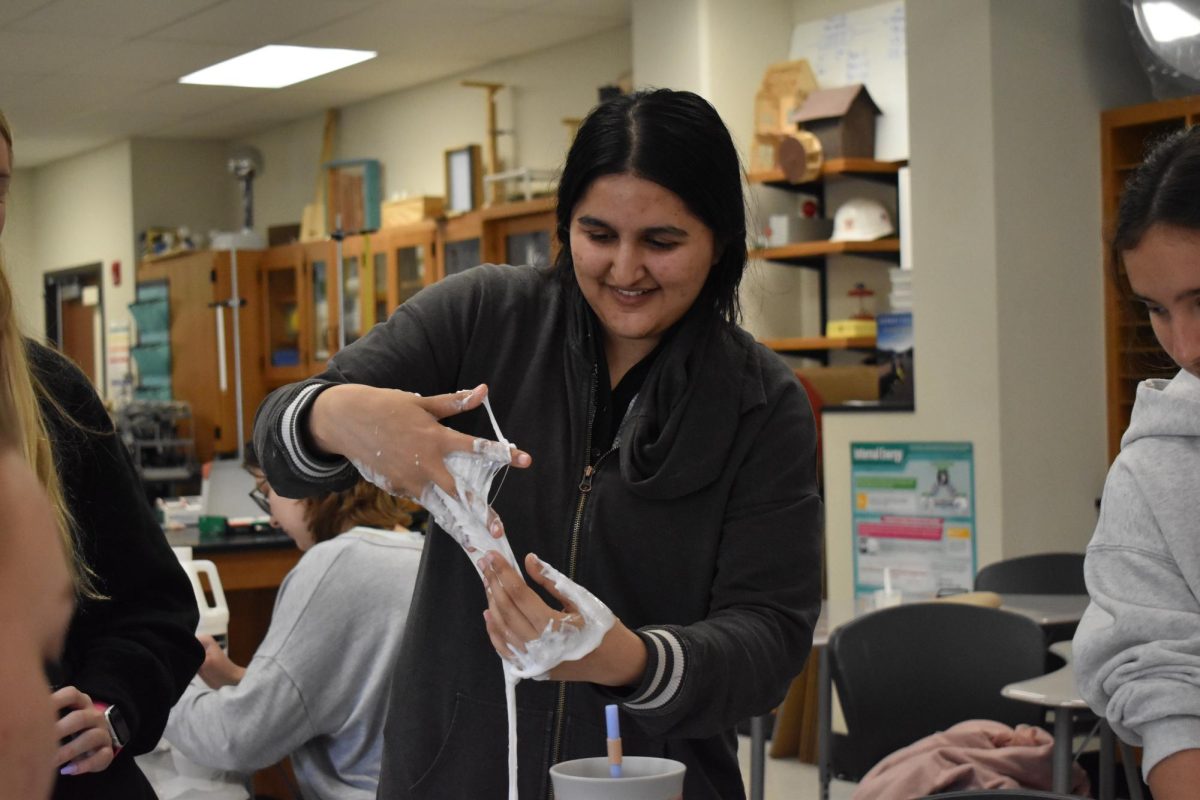





![In perfect shooting form and with eyes on the rim, junior Tyler Kuehl is about to shoot his next basket in the last game of the season against Marquette High School. Kuehl has been playing basketball since he was 5. “Even though I played basketball all my life, the game-winning shots can be pressure, its confidence. If youre going into that shot and not thinking that youre gonna make it, its obviously not going in. And if you believe, [it will]. Thats the only way you can succeed,” Kuehl said.](https://pwestpathfinder.com/wp-content/uploads/2024/01/unnamed-32-1-1200x1200.png)

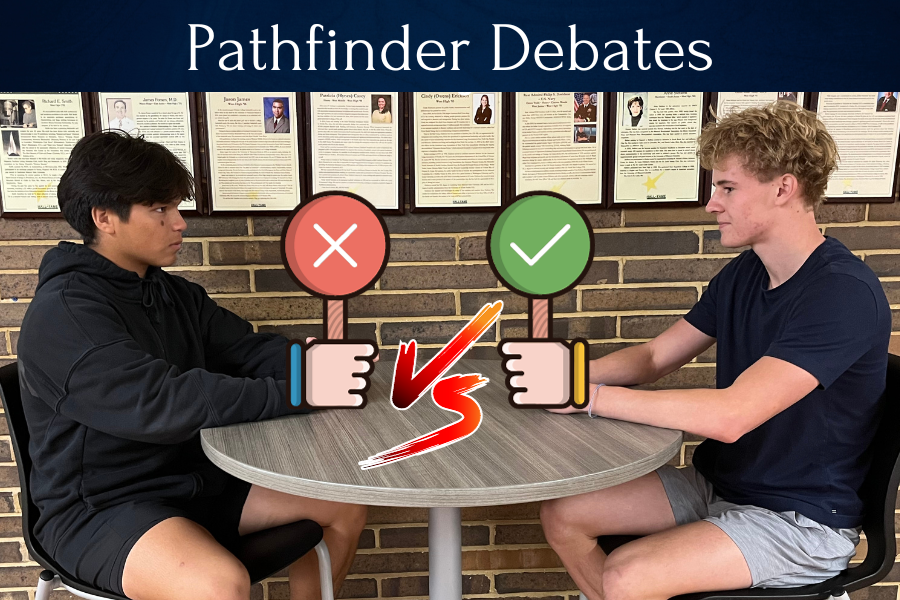

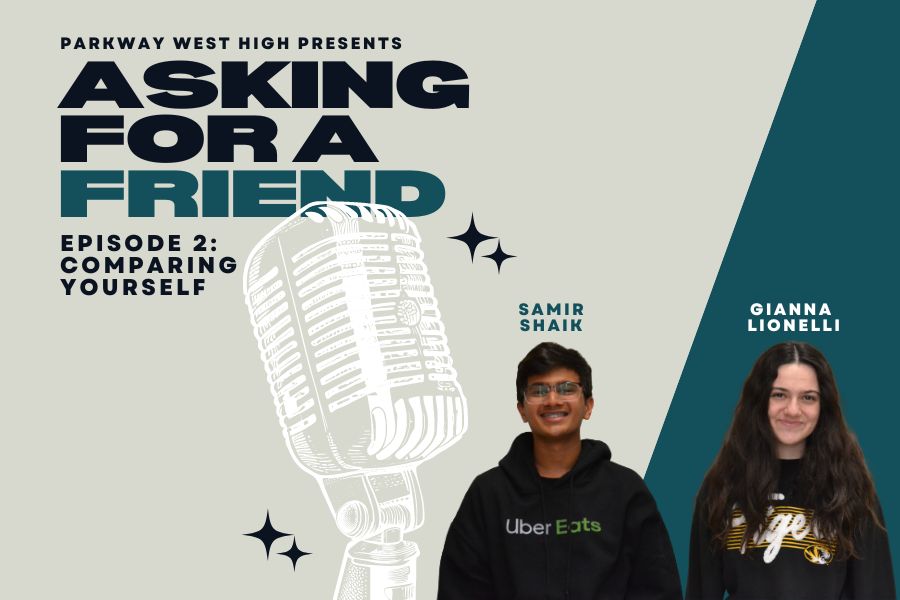

![“Sometimes I feel like Im not good enough and that I can never get better. I’m still overcoming this [feeling]. I keep pushing myself everyday [to be a] better [runner] even when I might not be the best at it. I also see how hard the upperclassmen work and that motivates me to do better. A varsity cross country runner once told me that even when you feel pain, you can run through it. Because of that, I push myself, [and] see myself improve. After a meet, I feel accomplished and [as though] I’ve worked hard. I feel like I can do better at running if I keep practicing. [How I run] depends on how I think. If I think I cant run — I cant run. I [motivate] and tell myself that Im a fast runner and everyones going to [surpass their personal record]. My biggest accomplishment so far was improving by 10 minutes on my 5K run. [It’s when I finally realized that] I am better than I thought I was.” Mahiya Pallipat, 9](https://pwestpathfinder.com/wp-content/uploads/2024/04/DSC8837-copy-2-1200x800.jpg)
![“My [favorite] hobby is running. I have been [a member of the] the cross country and [the] track and field team. [I also enjoy] tinkering [and constructing] random things. Everybody on our team knows about [the complications I had because of my] back. I had [a snag from my regular hobbies after going] through a surgery back in 2022; it took a lot out of me. I couldnt run for four months, and I was really out of shape [when] getting back into cross country. It was really hard for me. I would say a lot of [my inspiration has come from] my dad to be honest. Hes the one who has pushed me to improve every day [in] every single [aspect]. Hes the one who taught me how to be responsible, manage my time well [and] be consistent. [It’s the] same with running; Im consistent and I try to work my hardest in order to get better every day. A lot of [my growth] has been tied to running because I have been so involved, but I feel like I’ve become a lot more social with people. Ive become more dedicated to the things I like. [During practice], Im starting to [run] with faster groups now. [I’m] able to keep pace with [people] who [I] didnt used to before. I [am] definitely most proud of my recovery [after] my surgery. It did take me four months to be able to run again, but after that, I really bounced back. I have improved a ton and Im really proud of that.” - Ragsy Muralidharan, 12](https://pwestpathfinder.com/wp-content/uploads/2024/04/RagsyMuralidharan_12-1200x800.jpg)
![“The first memory that comes to my head is when everyone starts doing the longhorn rumble when we call [out to the audience], they stomp and clap with us along to the beat of the cheer. I [started to appreciate cheer] when I got to high school. [At first], I did it for fun in middle school just to say that I [had a hobby]. When [I got to] high school my coach appreciated me and [listened to] my opinions. It really made me fall in love with the sport again. My favorite thing about cheer is the friendships that I get from it. [I] get to see the people I’m with all the time because [we] have practice [together often]. Especially during football season [is when I get to] hang out with [my teammates] every day. The people I met through cheer and got close with this year make me [want] to continue cheer. [I also got closer with] the people on [the] varsity team and [was able to gain friendships] through that. I am happy [that I get to] cheer with [everyone] next year. It [urges me to] keep going. The cheer community is fun because everyone just understands each other. Were all very similar [and connected] in ways and its like a tight knit family.” Alyssa Gessner, 9](https://pwestpathfinder.com/wp-content/uploads/2024/04/DSC_0063-1200x800.jpg)
![“Im passionate about volleyball. Ive been playing for six years. I play it because I like the way that, [even though,] its a team sport, its also focused on [a person] individually; especially in my position since Im the back row defense where the ball can hit me. Its [up to] me, I can’t blame anybody else. I like how its very focused on [the] performance and how well [I] react to how the other team plays. The way I play really matters to me because it’s a team sport and I dont want to let my teammates down.” Emma Barton, 9](https://pwestpathfinder.com/wp-content/uploads/2024/04/image1-1200x800.jpg)
![“Im very passionate about debating, [which is why] I am [a member of the] speech and debate team. I like how it offers opportunities to speak [from] viewpoints on different opinions with people outside of our group from other schools around our communities. I usually participate in public forum debates [and] the topic [we speak about] changes every month. One debate that I was most invested in [took place in] February; which was [about whether or not] the US federal government should ban all single use plastics. I feel like I spent the most time working on this case [than any other discussion], and I was determined to make it into finals. I hold competition very dear to me. I have only gone to two tournaments so far, but Ive already made it into the finals. [Finals are important because], I think it really shows how much growth and [effort you’ve put in through the battle].” - Bethany Liao, 9](https://pwestpathfinder.com/wp-content/uploads/2024/04/Bethany-L-1200x800.jpg)


